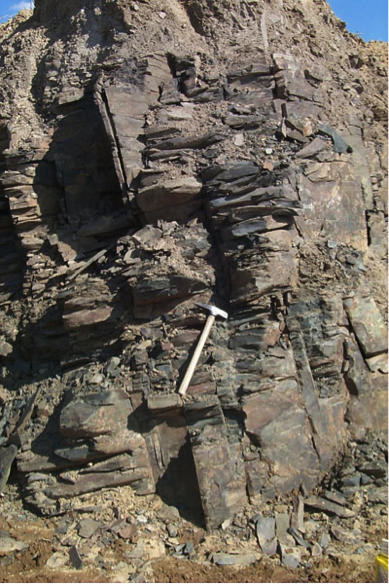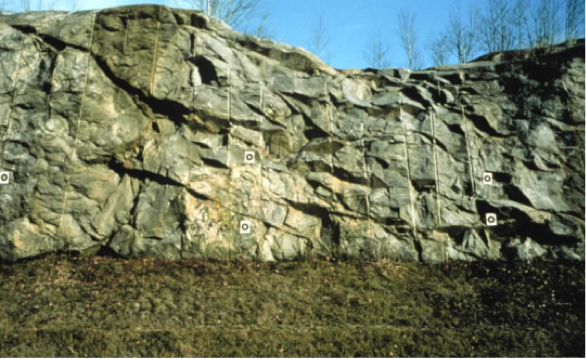Importance of Fractures
Fractured aquifers are one important and widely used class of aquifer because they are commonly both highly permeable and rapidly recharged. For example, groundwater recharge to the limestone aquifer beneath Nittany Valley in the Spring Creek watershed is around 30-45% of the annual precipitation (in comparison to typical recharge of <10% of precipitation). Fractured aquifers are permeable despite their overall low porosity (usually <5%) because natural fractures usually form in consistent orientations and are well connected in networks over hundreds of meters to tens of kilometers or more (Figures 15-16). The preferred orientation of major fractures leads to anisotropy in permeability, in which the aquifer may be more permeable parallel to the dominant fracture directions than in other orientations.
The rapid flow rates and direct pathways for recharge from the land surface also lead to concerns specific to fractured aquifers. In the absence of confining layers or thick soils, rapid recharge along fractures that extend to or nearly to the land surface increase vulnerability of contamination by surface activity, including fertilization of fields, pesticide application, or spills. Direct connections between surface water bodies and groundwater through major fracture systems also increase the potential for water-borne pathogens to enter the groundwater system, especially during periods of high flow or if confining layers along stream beds are breached. Compounding this risk, if contamination does occur, flow along fracture networks can be very rapid and the direction and rates of contaminant transport difficult to predict - unless the fracture network in the subsurface is extraordinarily well known, which is rarely the case. Because of their potential for contamination, fractured aquifers are a subject of highly active research, including dedicated large-scale field programs (e.g., check out the U.S. Geological Survey’s Mirror Lake project).


